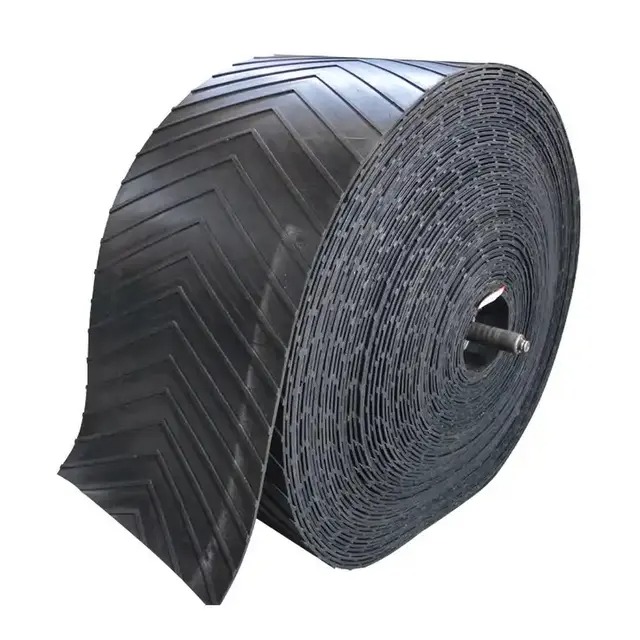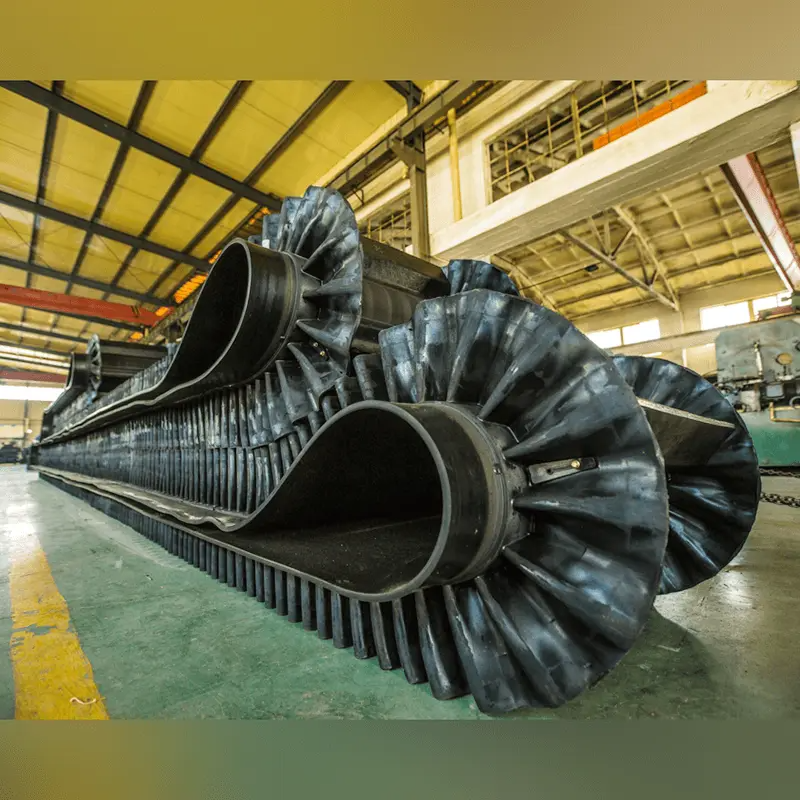Views: 179 Author: Site Editor Publish Time: 2025-08-21 Origin: Site









When it comes to industrial automation and material handling, conveyor belts are essential. They streamline processes, reduce labor costs, and enhance productivity. However, one of the most common questions potential buyers have is: “What is the price of a conveyor belt?” The answer is not straightforward because conveyor belt price varies significantly based on multiple factors such as material, size, type, customization, and market conditions. In this guide, we will explore everything you need to know about conveyor belt pricing, from cost determinants to budgeting strategies, so you can make an informed purchasing decision.
The price of a conveyor belt is determined by a combination of physical specifications, application requirements, and manufacturing complexity. Below are the primary cost drivers:
The type of material used directly impacts the cost. Common materials include rubber, PVC, polyurethane, and metal mesh. Rubber belts are durable and versatile, making them suitable for a wide range of industries, while PVC and PU belts are preferred for food-grade applications. Specialty materials like heat-resistant or flame-retardant belts generally cost more because they require advanced manufacturing techniques and higher-quality raw materials.
Both length and width contribute to pricing. Larger belts require more raw materials, more labor, and longer manufacturing time. Standard-width belts are typically more cost-efficient, whereas custom sizes can lead to higher production costs due to the need for specialized tooling.

Flat belts, modular belts, and cleated belts have different price ranges. Cleated belts, for instance, are more expensive because they require additional molding and assembly. The specific application—whether for packaging, mining, agriculture, or food processing—also influences pricing since each industry has unique performance requirements.
Heavy-duty conveyor belts with reinforced layers or high tensile strength are more costly because they use stronger materials and are engineered for demanding environments. Lightweight belts for small product handling are generally less expensive.
Customized belts, such as those with special coatings, sidewalls, guides, or perforations, will have higher prices. Customization also extends to branding, color, and unique structural features tailored for specific machines or workflows.
Bulk orders typically reduce the unit cost due to economies of scale. However, small-batch or one-off orders may come with higher per-unit pricing because setup costs are spread over fewer units.
While exact figures vary depending on the factors mentioned above, the table below provides a general idea of conveyor belt prices in different categories:
| Belt Type | Material | Typical Price Range (per meter) | Common Applications |
|---|---|---|---|
| Flat Rubber Belt | Natural/Synthetic Rubber | $20 – $80 | Mining, Agriculture, Heavy Industry |
| PVC Food-Grade Belt | PVC | $15 – $60 | Food Processing, Packaging |
| PU Food-Grade Belt | Polyurethane | $25 – $70 | Bakery, Meat, and Dairy Production |
| Cleated Rubber Belt | Rubber + Cleats | $30 – $100 | Inclined Transport, Bulk Handling |
| Modular Plastic Belt | Polypropylene | $25 – $90 | Beverage, Automotive Assembly |
| Heat-Resistant Belt | Special Rubber Compound | $40 – $120 | Foundry, Cement, Glass Industry |
Note: These are indicative prices. Actual costs can vary depending on supplier, customization level, and market trends.
Purchasing a conveyor belt should not be based on price alone; rather, you should balance cost with performance, durability, and long-term operational efficiency. Here are steps to help you budget effectively:
Before requesting a quote, clearly define the belt’s purpose, load capacity, operating environment, and expected lifespan. This information will help suppliers recommend the most suitable belt type.
A cheaper belt might require frequent replacements, leading to higher total ownership costs. Conversely, a higher-priced belt with greater durability may offer better value over time.
Some conveyor belts require more frequent cleaning, lubrication, or tension adjustments. Including these operational costs in your budget will provide a more accurate picture of total expenditure.
Obtain quotes from different suppliers for similar specifications. This not only helps you find competitive pricing but also provides insight into the market rate.
Shipping costs can be significant, especially for long or heavy belts. Some suppliers include installation in the price, while others charge separately.

While cost savings are important, compromising on quality can lead to production downtime and higher maintenance costs. Here are strategies to save money wisely:
Standardize Specifications – Choose standard sizes and configurations whenever possible to avoid customization costs.
Buy in Bulk – If your operations require multiple belts annually, bulk purchasing can secure discounts.
Select the Right Material for the Job – Avoid over-specifying features you don’t need; for example, don’t choose a heat-resistant belt if your application never reaches high temperatures.
Schedule Preventive Maintenance – Proper care extends the lifespan of your belt, reducing replacement frequency.
Partner with a Reliable Supplier – Building a long-term relationship with a trusted supplier can result in better pricing, faster delivery, and tailored solutions.
Q1: Why do conveyor belt prices vary so much?
Prices vary because of differences in material, size, application, customization, and market supply-demand conditions. For example, a heavy-duty mining belt will cost more than a lightweight packaging belt.
Q2: How can I estimate the cost before contacting suppliers?
You can use standard pricing ranges as a reference and adjust for material type, dimensions, and special features. The table in this article is a good starting point.
Q3: Is it better to buy a cheaper belt and replace it more often?
Not necessarily. While initial costs may be lower, frequent replacements can lead to higher total costs over time, especially when factoring in downtime and labor.
Q4: Do shipping costs significantly affect conveyor belt price?
Yes. Because conveyor belts can be long and heavy, shipping costs can add a substantial percentage to the total price, particularly for international orders.
Q5: Can I negotiate conveyor belt prices?
In many cases, yes. Bulk orders, long-term supply contracts, and flexible delivery schedules can give you leverage to negotiate better terms.
The conveyor belt price you pay will ultimately depend on your specific operational needs, the materials and construction methods used, and whether customization is required. Understanding the factors that influence pricing allows you to make informed decisions, avoid overpaying, and select a belt that delivers the best performance and value for your investment. Always balance upfront costs with long-term durability and efficiency, and work with reputable suppliers who can provide consistent quality and service.
A conveyor belt is more than just a moving surface—it is a critical part of your production system. Choosing wisely will ensure smoother operations, reduced downtime, and better returns on your investment.
